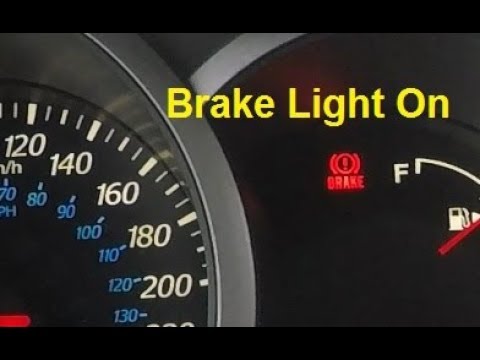
In our article today, we shall be looking at the reasons your car or dashboard gauges stopped working and what you should do to correct this fault. Properly caring for your car is one way of ensuring that it lasts longer. The clue to getting the best out of your car is through proper maintenance. Most cars are faulty because of inadequate care from the user.
Proper maintenance on your car will not only keep its value but will also help ensure that it is safe and reliable. It is essential to check your car’s conditions before driving to ensure that it is safe to use.
There are at times when your car might be in an abnormal condition. What do you do at that moment? Some might decide to overlook and fix it later because it’s probably a minor issue. Still, it is advisable to take note of any problems in your car and fix it immediately in respect of whether it is a minor or major issue.
In this article, the attention will be shifted to gauges. The dashboard gauges are the internal mechanisms of a vehicle showing essential information about its speed, distance, heat, and fuel. They are mounted in the instrument cluster in a dashboard. Most vehicle gauges include the speedometer, tachometer, fuel gauge, water temperature gauge, and oil pressure gauge.
Let’s drive-in on what is needed to be known about the different gauges of your car and the pro tips on how to ensure they work perfectly.
Read also: Catalytic Converter: Uses, Types & Maintenance
- Speedometer – The speedometer gauge helps indicate the current speed at which your car is traveling. It could be in an electronic or mechanical form, depending on the type of car.
Pro Tip: Drivers should ensure that they check their speed using the speedometer for safety reasons.
- Fuel Gauge – The fuel gauge informs the driver of the quantity of fuel left in the car to burn for combustion. The engine of the vehicle cannot work if there is no fuel.
Pro Tip: Drivers should ensure that the fuel gauge is checked when the car is not moving so that there will be a more accurate estimate of the quantity of fuel left in the tank. Also, it is advisable to fill the tank once it reaches half a quarter of the tank to ensure that the fuel pump is lubricated correctly.
- Tachometer: The tachometer or RPM gauge measures the revolutions per minute (RPM) of a car’s engine. It shows the rate at which the engine is rolling. The tachometer could be in a digital or analog form, depending on the type of car.
Pro Tip: Drivers should ensure that they monitor the tachometer to improve their car’s performance or fuel-efficiency.
- Water Temperature Gauge – This gauge helps monitor the car’s engine coolant temperature to ensure it does not get overheated. This gauge varies among cars; some use a needle to display their temperature, while some can provide a live, digital display of their temperature. On average, the temperature of a vehicle’s engine is between 195 – 220 °F.
Pro Tip: It is essential to pay close attention to the temperature gauge of your car. An overheating engine can lead to severe and permanent damage to the engine, leading to costly repairs or a complete replacement.
- Oil Pressure Gauge – This gauge helps monitor the force pushing the engine’s oil rather than checking the level of oil in the machine. On average, the standard oil pressure of a vehicle in motion is between 20 – 50 PSI (pounds per square inch), but if it’s in an idle state, it will relatively be less.
Pro Tip: It is pertinent to know that the oil pressure in a vehicle varies and it changes depending on the engine’s RPMs. Meanwhile, ensure that the car is turned off immediately if the oil pressure gauge drops or doesn’t read any pressure.
Effects of Gauges not working
When the gauges in your car are faulty, it’s something that you shouldn’t neglect. There is the need to identify the cause and fix it immediately. A defective gauge may lead to the gauge suddenly changing positions or giving out an incorrect reading. It will also disable your car’s engine and affect its performance, leading to a considerable inconvenience. Probably, if you experience this while driving, you might get stuck on the roadside while you plan on fixing it.
Essential Tips to know that your Gauges are faulty
At times, you might still be driving while the gauges are faulty without knowing. There is the need to know the essential tips on how to identify when they are not working. Getting inaccurate readings and the intermittent failure of the gauges should be a tip to let you know that your gauges are faulty. Let’s glance at the following information to see when each of the gauges is faulty;
- For the fuel gauge, you will notice that the fuel level is off.
- For the speedometer, you will notice that the speed reading of the vehicle is inaccurate.
- For the oil pressure gauge, you will notice that the oil pressure is blinking on and off frequently, and the gauge reading is too low or high.
- For the tachometer, you will notice that the RPM (revolution per minute) of the engine is giving inaccurate readings.
- For the water temperature gauge, you will notice that the temperature gauge readings are very high, the engine is overheating, the temperature is changing unsystematically, and the temperature gauge coolant leaks around the thermostat beneath the car.
If you notice any of these things from any of your gauges, it implies that they are faulty.
Read also: Symptoms Of A Bad Oxygen Sensor
Causes of Gauges not working
Identifying why one or more gauges in your car aren’t working can be divided into two scenarios. Let’s have a look at them below;
- All gauges are not working: When all gauges aren’t working, it could be caused by a defective instrument cluster wiring or a blown fuse. Another scenario is when the gauges seem to move unsystematically, this problem might be from the voltage regulator that supports the instrument cluster. Also, in a situation when the gauges appear to be pegged at the highest possible reading, the issue might be from a wiring problem or a wretched instrument voltage regulator.
- A single gauge is not working: When a single gauge isn’t working or is working unsystematically, it could be that the gauge itself is faulty or the fault is a result of a broken sensor from the wiring or sending unit.
For some gauges that you can’t find sensors, instead, it’s replaced with physical cables; when it’s not working, the problem might be from a broken cable or stripped gear.
.
How to Fix Gauges not working
A circumstance while you are driving, you experienced that one or more gauges aren’t working in your car. First and foremost, you must have been able to detect the problem and identify the cause before planning on fixing it. It’s just as if you are planning to solve a problem; the first thing is to identify the source of the problem and the cause of the problem before planning on solving it.
If you intend on fixing your faulty gauge yourself, it can be done, but if you can’t, or you don’t have the right tools, it is advisable to refer your car to the mechanic. Fixing your gauges can also be divided into two scenarios. Let’s have a look at them below;
- Fixing a single gauge that isn’t working: Fixing a single gauge is relatively more comfortable than fixing multiple gauges. It’s something you can handle easily if you have the right tools. You can fix this type of issue yourself if you can find the sending units and sensors and remove them so testing can be done in the gauge to know whether it is faulty or not before replacing it with a new one. However, if you aren’t comfortable with it, you will have to refer your car to the mechanic.
For gauges that you can’t find sensors in it instead, you find cables in it; you will have to replace the cable by unbolting it from the transmission, disconnecting it from the instrument cluster before slipping it through the firewall.
- Fixing multiple gauges that aren’t working: Identifying the fuse associated with the instrument clusters or gauges is the first step in resolving this issue. If you have the right tools, you should check the fuse if it’s good or not with a test light or multimeter.
If the result is positive, the power of each gauge should be limited. It can be done by removing the instrument cluster, which might prove to be tedious and time-consuming in some vehicles.
The effort involves removing some trim pieces and unscrewing the cluster to pull it free. It’s just as if you are installing a new car radio. If you are quite comfortable with it, you can go on with it.
For gauges moving unsystematically, fixing it requires removing the regulator, cleaning the connector terminals, and reinstalling it.
Why did my dashboard stop working?
Your automobile may have blown a fuse if the dashboard isn’t lighting up at all. The lights should operate again after removing and replacing the old fuse. While a new fuse may solve the problem, it could potentially signal a more serious electrical issue.
What causes the speedometer of gas gauges to stop working?
Speedometer failure can also be caused by faulty wiring. The wires can be severed or shorted, resulting in the fuse blowing out. The speedometer will stop working as a result of this. Wiring problems are especially common in older vehicles.
What causes gauges to go crazy?
Test the alternator and battery. When an alternator begins to fail, the power level drops, and all components that rely on it become starved’ for electricity and behave erratically.
How much does it cost to fix an instrument cluster?
The average cost of replacing an instrument cluster is between $804 and $824. Labor costs are expected to range between $77 and $98, with parts costing $726. This range excludes taxes and fees, as well as your individual car and geographic region. Repairs to the surrounding area may also be required.
Final Words
When you notice that your car’s gauges aren’t working while driving, you have to try and fix it immediately. Most of the time, it could be that the gauge itself is faulty or down to connection problems. If the gauges are defective, replace them with new ones. Ensure that the issue is resolved to avoid further implications in the car. Failure to fix it might implicate the instrument cluster in your vehicle and might cost you much.









